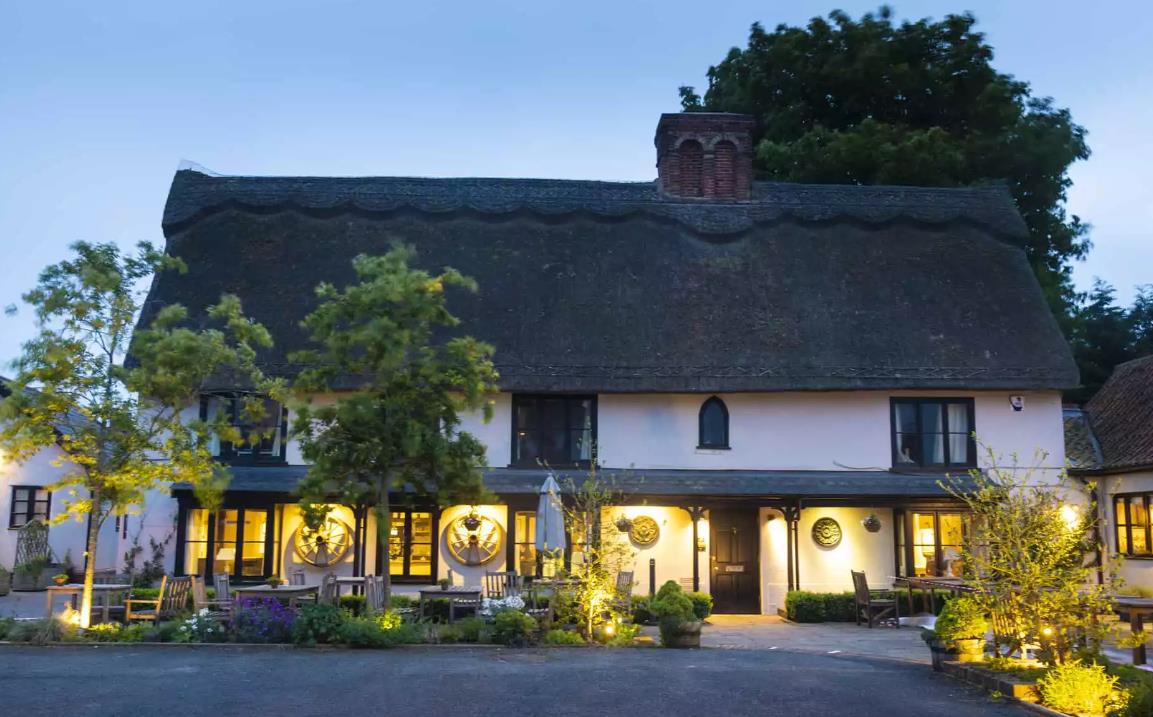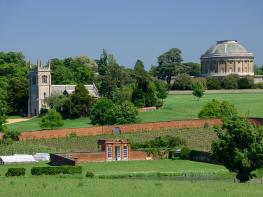Suffolk Retreats offers accommodation, in a peaceful and tranquil location for groups of up to…
Great Thurlow and Little Thurlow

An easy walk across high farmland belonging to one of Suffolk's largest agricultural estates.
3.5 miles (5.7kms)
About the walk
This walk is centred on the twin villages of Great and Little Thurlow, which have been called the last feudal villages in Suffolk. Most of the land belongs to the Thurlow Estate, which owns 17,000 acres (6,880ha) of prime arable farmland in Suffolk, Essex and Cambridgeshire, as well as a herd of dairy cattle. Much of this is in the hands of Edmund Vestey of Little Thurlow Hall, whose grandfather made his fortune in the late 19th century when he established Union Cold Storage in Liverpool to import cheap meat from Australia and became known as 'Mr Spam'. The Vestey family is now one of the richest in Britain, with assets of over £700 million and valued at No. 101 on the Sunday Times Rich List in 2008.
According to his biography in Who's Who, Edmund Vestey was educated at Eton, owns two estates in Scotland, is a member of the Cavalry and Guards Club and joint master of the Thurlow Hunt, one of the oldest hunts in the country. His son George lives in Great Thurlow Hall. The Vestey family play a key role in local affairs and have provided the villages with facilities including a recreation ground, but there are those who feel it is inappropriate that so many people should be dependent on the estate both for housing and for work.
Newspaper business
The Vesteys were not the first great landowning family in Thurlow. Sir Stephen Soame (1544-1619), who built the first Little Thurlow Hall, was Lord Mayor of London. It was he who erected the almshouses for 'eight single persons of honest life and conversation', and the old schoolhouse for the teaching of Latin to boys, both of which are now private homes. A more recent lord of the manor was W H Smith (1825-91) of Great Thurlow Hall, who took over his father's newspaper business and turned it into a household name by securing the rights to sell newspapers and books at railway stations. He later became First Lord of the Treasury and Leader of the House of Commons and is remembered in Thurlow, appropriately enough, by the reading room that he gave to the village.
Walk directions
Walk north from the Reading Room along the main street, passing the post office and the village hall, then turn right on a narrow path between the houses. Cross a stile and bear left across a meadow to reach another stile. At a junction of paths, go straight ahead across a wide track and keep left to cross two more meadows, each with stiles. Walk behind the school and bear right to pass through a gate. Cross a concrete footbridge and stay on the fenced-off path to reach St Peter's Church, Little Thurlow.
Walk through the churchyard and turn left to cross the road and continue on a narrow footpath beside the River Stour. The path is lined with hedges at first but you soon reach open fields. Keep to the right to walk beside the river. Although it rises only a short distance away, the Stour has already gathered pace though it is nothing like the river you will see downstream at Sudbury, Flatford or Shotley Gate.
When you come to a weir, turn right along the road into Little Bradley and follow it round to the left to All Saints Church, whose round tower dates to the early 11th century. The road now bends right and climbs gently between farmland to the left and meadows to the right. Turn right at a footpath sign along a farm drive. Walk past the stables and barns of Hall Farm, then go through a gate to cross a meadow. Leaving the meadow through another gate, keep straight ahead alongside a hedge to reach a road.
Turn right to walk along Broad Road into the hamlet of Little Thurlow Green. After passing the green, walk downhill past modern houses and the thatched Old Inn. Before you reach the thatched pink cottage, turn left on to a concrete farm track with a hedge to your right. The path passes a sewage works then turns right and left around a field to enter a belt of woodland beside the River Stour.
Turn left at a crossroads almost immediately to stay on the main path. Keep straight ahead when you see an arched footbridge across the river to your right. Carry on along the bottom of a field. Cross a stile and bear right around a meadow, then pass through a gate to enter a small graveyard opposite Great Thurlow church. Turn right at the road, alongside the high brick wall of Great Thurlow Hall, and cross the river to the start of the walk.
Additional information
Country roads, meadows and field-edge paths, 6 stiles
Gently rolling farmland
Mostly on lead on farmland
OS Explorer 210 Newmarket & Haverhill
Great Thurlow Reading Room or village hall
None on route
WALKING IN SAFETY
Read our tips to look after yourself and the environment when following this walk.
Find out more
Also in the area
About the area
Discover Suffolk
Suffolk is Constable country, where the county’s crumbling, time-ravaged coastline spreads itself under wide skies to convey a wonderful sense of remoteness and solitude. Highly evocative and atmospheric, this is where rivers wind lazily to the sea and notorious 18th-century smugglers hid from the excise men. John Constable immortalised these expansive flatlands in his paintings in the 18th century, and his artwork raises the region’s profile to this day.
Walking is one of Suffolk’s most popular recreational activities. It may be flat but the county has much to discover on foot – not least the isolated Heritage Coast, which can be accessed via the Suffolk Coast Path. Southwold, with its distinctive, white-walled lighthouse standing sentinel above the town and its colourful beach huts and attractive pier features on many a promotional brochure. Much of Suffolk’s coastal heathland is protected as a designated Area of Outstanding Natural Beauty and shelters several rare creatures including the adder, the heath butterfly and the nightjar. In addition to walking, there is a good choice of cycling routes but for something less demanding, visit some of Suffolk’s charming old towns, with streets of handsome, period buildings and picturesque, timber-framed houses.
Nearby stays
Restaurants and Pubs
Nearby experiences
Recommended things to do
Why choose Rated Trips?
Your trusted guide to rated places across the UK
The best coverage
Discover more than 15,000 professionally rated places to stay, eat and visit from across the UK and Ireland.
Quality assured
Choose a place to stay safe in the knowledge that it has been expertly assessed by trained assessors.
Plan your next trip
Search by location or the type of place you're visiting to find your next ideal holiday experience.
Travel inspiration
Read our articles, city guides and recommended things to do for inspiration. We're here to help you explore the UK.













